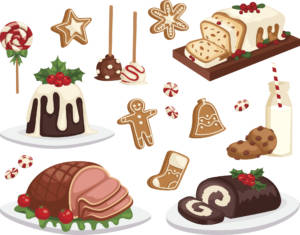
Engaged Canadians can find ideas or inspiration for their upcoming nuptials nearly anywhere, especially in the Old English folk rhyme “something old, something new, something borrowed, something blue, and a sixpence in your shoe.” This verse originated out of the old superstition that a new bride needed to defend her marriage against bad fortune with blessings of fertility and prosperity. When it comes to your special day, there are many details that require your attention and creativity. Let’s talk about some creative ways to implement “something borrowed” in your wedding day plans.
Thank You for the Music
Music is an important aspect of your big day. From a selection performed at your ceremony to the playlist at your reception, you can merge the joy of music with the concept of borrowing. Did your or your partner’s parents have a special song that they played for the first dance at their wedding? Pay honor and start a new tradition by “borrowing” this same song for your first dance. Let’s suppose your parents danced to Lionel Richie and Diana Ross’s classic duet “Endless Love.” You could repurpose this song for a joint dance with your parents.
I Can’t Help Myself (Sugar Pie, Honey Bunch)
Have you ever been responsible for a holiday menu or turned to a loved one for a time-honored, treasured recipe for a favorite dish? Why not do the same for your wedding? Maybe a relative or a friend makes a mean fruit pie or poutine gravy that’s to die for. You can “borrow” these recipes and incorporate them into your wedding-day eats. If you’re working with a caterer, perhaps you don’t have to use the exact recipe but you achieve the same symbolic gesture by including a dish of significance on the menu. You’re not limited to food, by the way. Think of a favorite cocktail from a restaurant or bar you love, like the Canadian classic, the Caesar cocktail. Borrow it for your celebration.
Ideas With Words
If you and your future spouse are writing your own words, you can incorporate words from the vows of dear family and friends for your own. If this sounds like a good plan, be sure to do it with the blessing of the persons whose special moment is inspiring yours. While your wedding vows should come from the heart, sometimes you find a poet, author, or songwriter has perfectly captured your feelings in a work. Why reinvent the wheel when you’ve got a luxury “Cadillac” that gets you where you want to go?
(Baby, You Can) Drive My Car
Driving off from your wedding reception in a car is often the perfect coda for your celebration. Ordinarily, you could drive your own vehicle or hire a driver with a luxury ride for this sendoff. Have you considered borrowing an automobile from someone in your village? Perhaps you know someone who has a vintage auto or something fancy and is willing to contribute to your nuptials in this way.
Diamonds and Pearls As an Ideas
It’s fairly common to incorporate jewelry and family heirlooms as borrowed items for your big day, especially rings, veils, and dresses. Consider these other ways of implementing these meaningful objects:
- Jewelry: Instead of wearing a ring or brooch, make it a part of a bouquet for a bride or other members of the wedding party.
- Décor: Use items of significance to loved ones in your table settings or other decorations.
- Invitations: Use photos or pictures of others’ belongings in your invitations, printed or digital.
Take extra-special care when using others’ possessions that are extremely valuable or otherwise difficult to repair or replace.
Borrowing ideas, items, and concepts from your nearest and dearest helps make your nuptials more special. This is one of the reasons this tradition inspired by old folklore has endured across generations and cultures. Temporary gifts contrast with the long-term love offered by a spouse, family, and friends.




